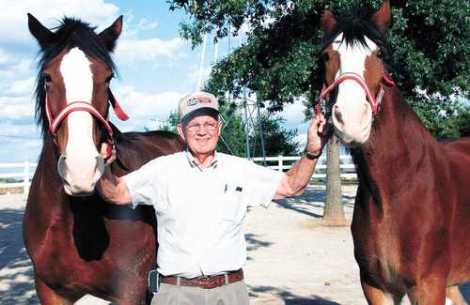
Lis Hartel and Jubilee
~~~
Lis Hartel, an equestrian who won two Olympic silver medals for Denmark in the 1950s despite being paralyzed below the knees because of polio, has recently died, according to the Danish Equestrian Federation. She was 87.
Lis Hartel’s equestrian career was one of true heroism.

In 1944, at age 23, Hartel was paralyzed by polio.
She gradually regained use of most of her muscles, although she remained paralyzed below the knees. Her arms and hands also were affected.
Against medical advice, she continued to ride but needed help to get on and off the horses.

After three years of rehabilitation, she was able to compete in the Scandinavian riding championships.
In 1952, she was chosen to represent Denmark in the Helsinki Olympics. Prior to this time women were not permitted to compete in the Olympic Equestrian events.
Even though she required help on and off her horse, Jubilee, she won the Olympic Silver Medal.

Lis Hartel and Jubilee
with Gold Medalist, Henri St-Cyr
Following her stunning performance, as Lis was helped down from her horse, a gentleman rushed to her side. It was the Gold medal winner, Henri Saint Cyr. He carried her to the victory platform for the medal presentation.
It was one of the most emotional moments in Olympic history.

Lis Hartel at the 1952 Olympics in Helsinki.
She became the first woman ever to share
an Olympic podium with men.
In 1954, Lis Hartel won the unofficial World Championships in Aachen, and the Olympic Silver Medal in the 1956 Olympics held in Stockholm. She became the Danish National Dressage Champion seven times.

Lis Hartel was the first Scandinavian woman entered into The International Women’s Sports Hall of Fame in New York, and was named one of Denmark’s all-time top 10 athletes in 2005.
In 1992, Hartel was included in the Scandinavian country’s Hall of Fame.
Lis Hartel is widely credited with inspiring the therapeutic riding schools that are now located throughout the world.
Shortly after winning the Olympic medal, Lis Hartel and her therapist founded Europe’s first Therapeutic Riding Center. This soon came to the attention of the medical community and Therapy Riding Centers spread throughout Europe.
By the late 1960’s equine riding was accepted by the America Medical Association as an “invaluable therapeutic tool”.
Today, the spirit of Lis Hartel lives on around the world.

Through her inspiration countless handicapped children and adults have become heroes in their own lives through their work with horses.
~~~
Re-written from news sources




























